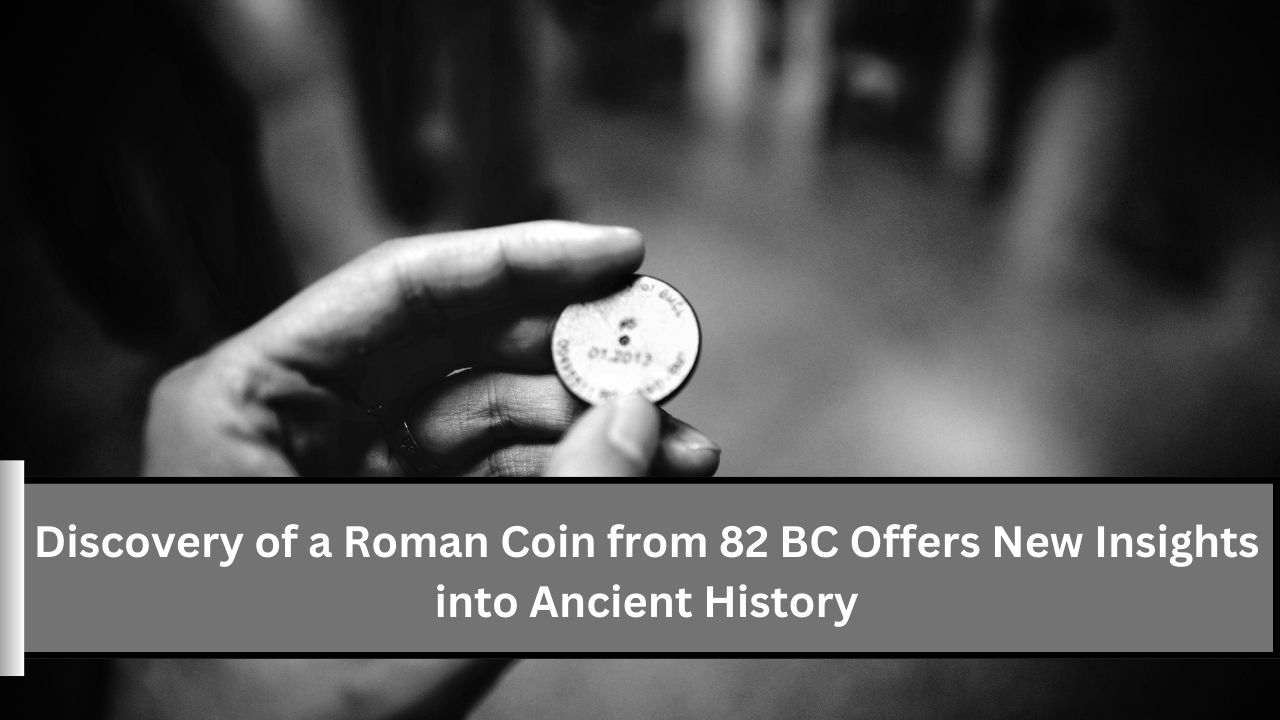Archaeologists recently uncovered a rare coin minted in 82 BC at a Roman dig site, and it is shedding light on a significant moment in Roman history. This coin dates back to a time of great political and social change, and its discovery offers valuable information about the Roman Republic. Historians are excited to study the coin further, as it can reveal more about the political, economic, and cultural life of ancient Rome during a time of conflict.
Rome in 82 BC: A Time of Change and Conflict
The year 82 BC was a period of chaos for Rome. It was during the Sulla-Marian civil wars, a struggle for power between two political groups. On one side were the optimates, who represented the wealthy elite and the Senate. On the other side were the populares, who supported the common people.
Lucius Cornelius Sulla, the leader of the optimates, took control of Rome in 82 BC after defeating his rival, Gaius Marius, a popular general. Sulla declared himself dictator and made changes to strengthen the Senate’s power, but his rule was marked by violence and political executions. The coin minted during this time reflects the complex power struggles that shaped Rome’s future.
Coins as Symbols of Power in Ancient Rome
In ancient Rome, coins were more than just currency. They served as symbols of power and authority. Leaders often put their images or symbols on coins to show their control over the state. The coin found from 82 BC likely carries the image of Sulla or one of his supporters, showing his dominance over the Roman Republic.
By putting his image on coins, Sulla could communicate his power to people across Rome. This was especially important in a time when many people could not read. The pictures and words on coins sent clear messages about who was in charge and what they stood for.
Roman Coins and the Economy
The coin from 82 BC also gives us clues about the Roman economy. At this time, Rome controlled a large empire, and coins were needed to pay soldiers, trade goods, and fund public projects. The economy had been damaged by years of civil war, and Sulla’s rise to power changed the distribution of wealth. Many people who supported Sulla became rich, while his enemies lost everything.
Coins also played a key role in military matters. Soldiers needed to be paid on time, and Sulla knew that having a strong currency was important to keeping his army loyal. The coin from 82 BC may have been minted to help pay for Sulla’s army and maintain his grip on power.
What the Coin Tells Us About Ancient Rome
The discovery of this ancient coin provides important archaeological insights. The coin was found in a Roman settlement or possibly a battlefield from the Sulla-Marian wars. Along with other artifacts like pottery and weapons, the coin helps archaeologists better understand the daily life and history of this time.
One remarkable thing about this coin is its excellent condition. Many ancient coins are worn down or corroded, but this one is still clear, with its inscriptions and images visible. This gives historians a great opportunity to study how coins were made, what metals were used, and the artistic style of the time.
The Lasting Impact of Sulla’s Rule
Finding this coin also reminds us of the lasting changes that Sulla brought to Rome. As dictator, Sulla passed reforms that weakened the influence of the common people’s representatives and increased the power of the Senate. Though he claimed to restore traditional Roman values, his rule actually set the stage for the rise of autocratic rulers, like Julius Caesar and Augustus.
Sulla’s dictatorship showed that military power could be used to take control of the Roman government. Over time, this idea would lead to the end of the Roman Republic and the beginning of the Roman Empire.
The Importance of Studying Ancient Coins
This coin from 82 BC is more than just an ancient artifact; it offers a window into everyday life in Rome. Coins were used by everyone, from soldiers to merchants, and they traveled across the empire, linking distant provinces to Rome. This makes coins an important part of understanding Roman society.
Studying ancient coins like this one helps historians piece together the story of ancient civilizations. Coins are durable, and they often survive long after other materials have decayed. They provide clues about economics, politics, and culture that help us better understand how people lived in the past.
Conclusion
The discovery of this coin from 82 BC offers a rare opportunity to explore a key moment in Roman history. It connects us to a time when Rome was transforming from a republic into an empire, marked by political struggles and military power. The coin serves as a tangible link to this past, helping us understand the people, economy, and political conflicts that shaped the ancient world.
As archaeologists continue to study this coin, new insights about Rome’s history may come to light, deepening our understanding of a fascinating era. This coin is not just a relic; it is a piece of history that helps us unlock the stories of a long-gone but important civilization.
FAQ
1. What is the historical significance of the coin minted in 82 BC?
The coin minted in 82 BC is significant because it reflects a turbulent period in Roman history during the Sulla-Marian civil wars. It provides insights into the political power struggles, economic conditions, and social dynamics of the Roman Republic at a time when Sulla declared himself dictator and made significant reforms.
2. Who was Lucius Cornelius Sulla, and why is he important in Roman history?
Lucius Cornelius Sulla was a Roman general and statesman who became dictator in 82 BC. He is important for his role in transforming the Roman Republic, particularly through his reforms that increased the Senate’s power while diminishing the influence of the common people’s representatives. His actions set a precedent for future leaders who sought to gain control through military force.
3. What does the imagery on the coin reveal?
The imagery on the coin likely features Sulla or symbols associated with his rule. Such imagery served to reinforce Sulla’s authority and legitimacy as a ruler. Coins were a way to communicate political messages to the public, especially in a time when literacy was low, making visual symbols crucial for propaganda.
4. How does the discovery of this coin help archaeologists and historians?
The discovery of this coin aids archaeologists and historians by providing valuable insights into the economy, culture, and political climate of ancient Rome. Its excellent condition allows for detailed studies of minting techniques and artistic styles, and its context can help identify the historical circumstances surrounding its use and circulation.
5. What can we learn about the economy of Rome during Sulla’s rule from this coin?
The coin from 82 BC offers insights into the economic conditions of Rome during Sulla’s dictatorship. It highlights the importance of coinage in trade, military payments, and public works. The economic shifts during this time, driven by Sulla’s proscriptions and redistribution of wealth, can also be analyzed through the circulation of coins like this one, showing how power dynamics affected economic stability.

